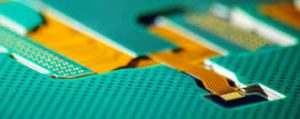How Thin Can Rigid Flex Circuit Boards Be Made?
Rigid Flex Circuit Boards
Rigid flex circuit boards can be extremely thin, with some as thin as 0.25mm or 0.4mm. Compared to a conventional rigid PCB, these thinner boards are more compact and offer greater mechanical flexibility. This allows the boards to fit in tight spaces and accommodate dynamic flexing without damage.
Thin flex circuits require careful design and assembly to make them robust and reliable. Choosing the right material for the flexible area is a crucial first step. The choice of material can impact electrical performance, as well as mechanical, thermal, and environmental properties. The board’s manufacturing process also plays an important role in how thin it can be made.
A specialized PCB fabrication process is required to create thin flex boards, which means they can be fabricated faster than traditional rigid flex circuit. This type of fabrication also allows for more precise layer alignment, and it can help to ensure that the flexible area will not interfere with the rigid sections of the board.

How Thin Can Rigid Flex Circuit Boards Be Made?
Another advantage of thin flex circuits is their compatibility with advanced PCB techniques, such as laser direct imaging. This technology offers the ability to lay down multiple layers of copper on a flexible substrate. This enables designers to maximize the amount of copper for a given thickness, making it possible to reduce the overall board size and cost.
The most critical factor in designing a flexible flex circuit is the minimum bend radius that can be achieved at a specific thickness. This is determined through extensive flex testing and characterization. This testing can include dynamic flexing, abrasion, and environmental testing. Thorough flex testing helps to validate the flex life of a board under expected environmental conditions, as well as test for electrical performance with mounted components.
To avoid shorts in the conductive paths during bending, it is essential to keep the spacing between pads at least twice as wide as the bend radius. This will ensure that the gaps between traces do not bridge during bending, which could cause a short and potentially damage the circuit board. It is important to use a larger gap for vias and plated holes as well. This will prevent stress from the adhesive expanding or contracting, which can potentially damage the circuit board during bending.
For areas that are subject to dynamic flexing, it is a good idea to use anchors and teardrop-shaped connectors to ensure they stay in place. It is also a good idea to use a rounded soldering surface on these areas, as this will also prevent the traces from becoming disconnected during flexing.
By incorporating these design tips into your PCB design, you can ensure that your flex circuits will be strong and durable enough to handle dynamic flexing. By partnering with an experienced electronic contract manufacturer early in the design process, you can ensure that the PCB is designed for maximum reliability and durability.








